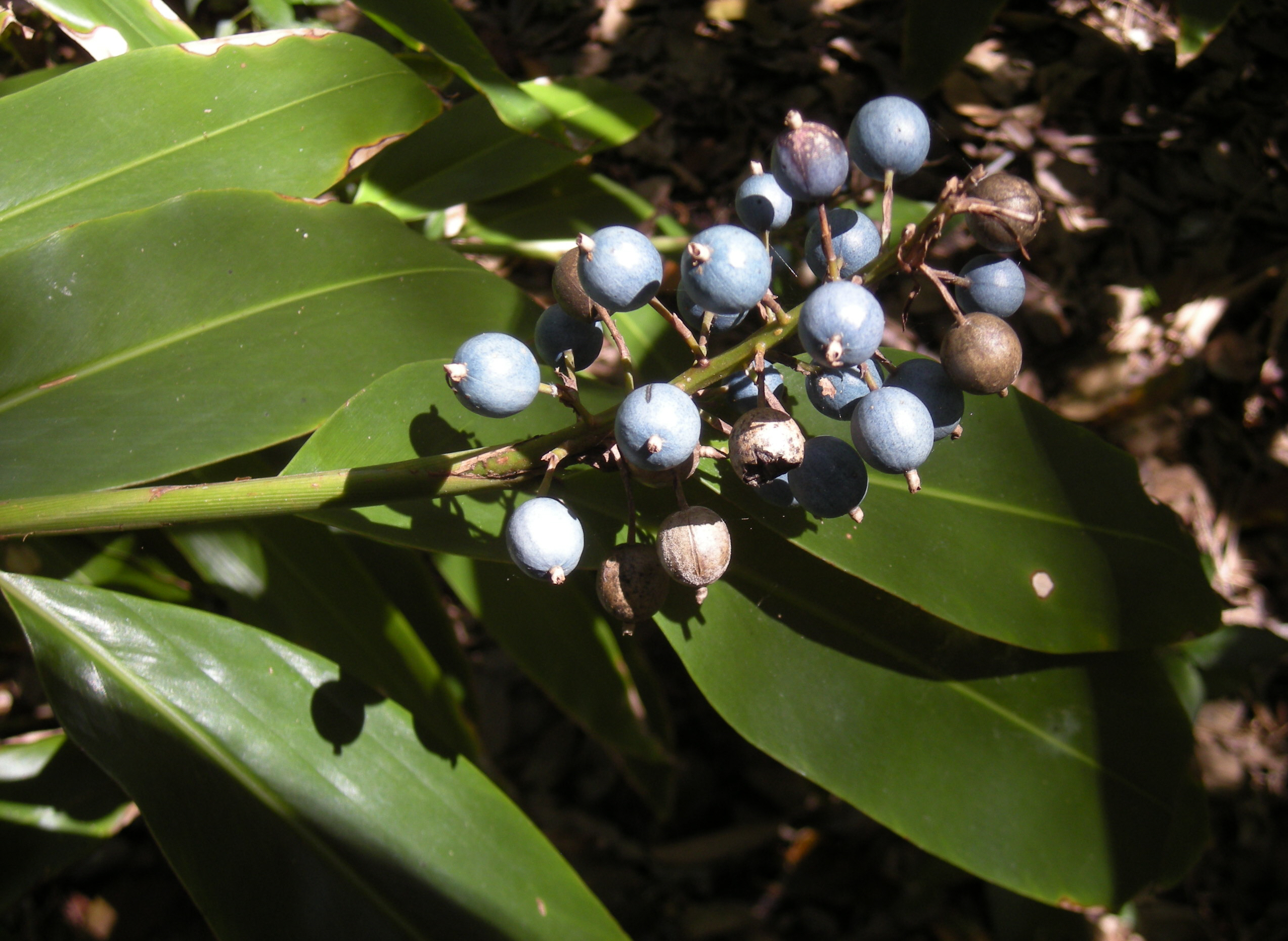- Alpinia caerulea
taxobox
name = "Alpinia caerulea"
regnum =Plantae
unranked_divisio =Angiosperms
unranked_classis =Monocots
unranked_ordo =Commelinids
ordo =Zingiberales
familia =Zingiberaceae
subfamilia =Alpinioideae
tribus =Alpinieae
genus = "Alpinia "
species = "A. caerulea"
binomial = "Alpinia caerulea"
binomial_authority = (R.Br.) Benth.|Native ginger, "Alpinia caerulea", is an understorey
perennial herb to 3 m., growing underrainforest ,gallery forest andwet sclerophyll forest canopy in easternAustralia .Leaves are up to 40 cm long and 3–10 cm wide. The inflorescence is 10–30 cm long. [ PlantNET, [http://plantnet.rbgsyd.nsw.gov.au/cgi-bin/NSWfl.pl?page=nswfl&lvl=sp&name=Alpinia~caerulea Alpinia caerulea plant profile] ] The blue capsule is globose 1 cm across, with a brittle outer covering containing black seed and white pulp.
Uses
The white pulp of native ginger has a pleasant sour flavour, used to activate salivary glands to moisten the mouth when bushwalking, with the seeds usually being discarded. The capsules can also be used as a flavouring spice, using the whole fruit and seed dried and ground. They can also be used to impart a pleasant sour flavour and red color in herbal
teas . The centers of new shoots have mild gingery flavour, and are excellent in various dishes as a ginger substitute. The roots can also be used in cooking, and have a more earthy resinous flavour.References
Wikimedia Foundation. 2010.
